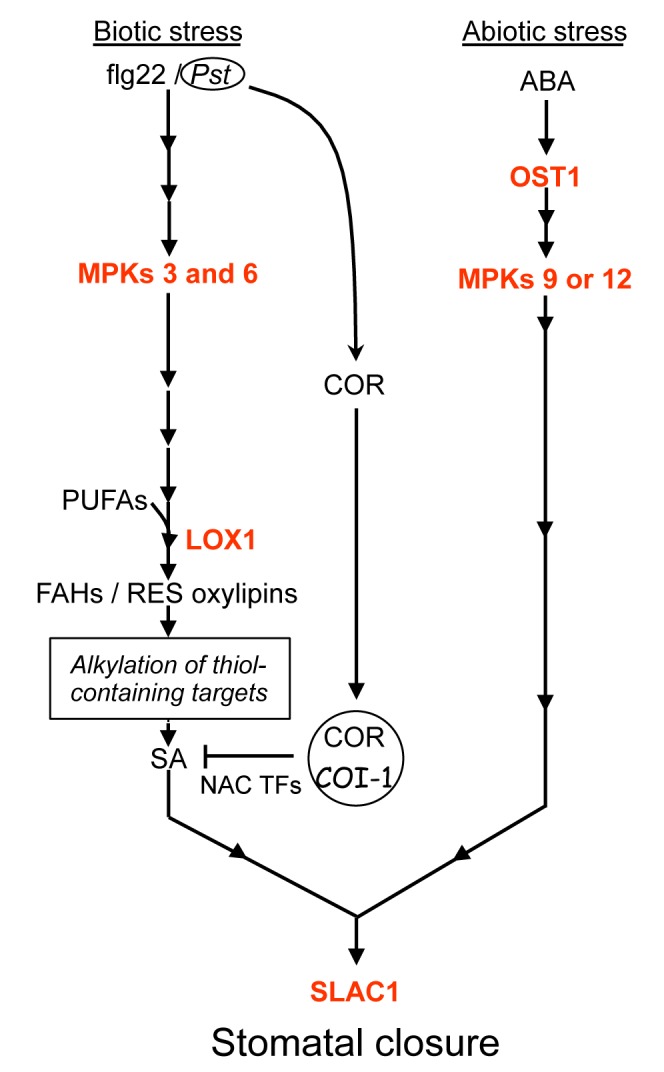Figure 7. Working model showing signaling components involved in bacterium- or flg22- and ABA-mediated pathways that lead to stomatal closure in the Arabidopsis guard cell.

In red are the steps whose activity has been demonstrated in this work by genetic approaches. Downstream of biotic stimuli (Pst or flg22), both MPK3 and MPK6 are required to activate production of LOX1-dependent oxylipins such as FAHs (9-HPOD(T)E) and/or reactive ketones (9-KOD(T)E). Our pharmacological data strongly suggest that the latter compounds modulate the activity of putative thiol-containing targets responsible for biotic signal transduction. Downstream of this step, SA is required to convey the biotic stress signal. In a COI1-dependent manner, COR inhibits the accumulation of SA through the activity of three NAC transcription factors and orchestrates the stomatal reopening [74]. On the other hand, the ABA-dependent pathway that is triggered upon abiotic stress requires the protein kinases OST1 and MPK9 or MPK12. As one of the final effectors required for the regulation of osmotic pressure in guard cells, activation of the slow-type anion channel SLAC1 is necessary for stomatal closure in response to both biotic stress and ABA. Not depicted in this model are the data provided by this work and supporting the involvement of ABA in the guard cell potentiation required for optimizing responses to biotic stress.
